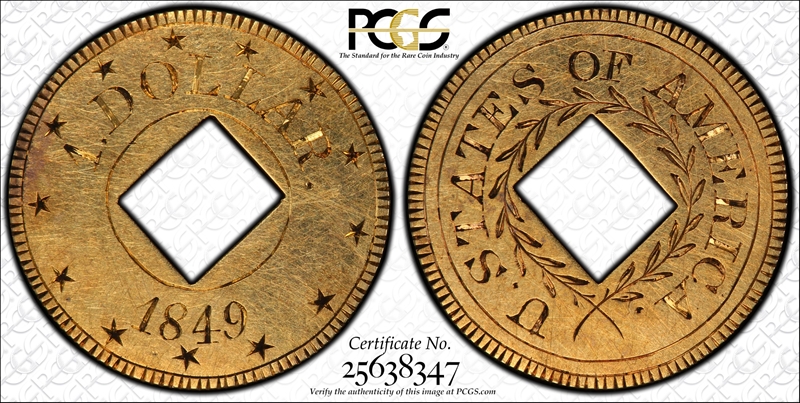1849 G$1 J-115 MS62 认证号-15445, PCGS号11502
拥有者评论
专家评论
Ron Guth
Gold Dollars were not included as part of the American coinage scheme until 1849. When contemplating the new denomination, a concern was the size of the coin. If made of the normal weight, the diameter of a gold dollar was only 14.3 millimeters -- the smallest of any coins then in use in America. A coin so small could be lost easily, so experiments were made to enlarge the diameter of the coin without altering the weight. Judd 115 illustrates that concept. James B. Longacre, who was ultimately responsible for the final designs, cut each of these patterns by hand, adding denticles, stars, lettering, numerals, and a wreath as incuse elements of the die. Because of the hand-engraving, each Judd 115 is unique in the size, placement, and relative positions of the various design elements. Even the shape of the central perforation varies: some are square in shape; others are more rectangular. Researcher David Akers speculated that as many as nine or ten examples existed, but the actual number may be closer to six or seven.
状况普查 了解更多
| #1 PCGS MS62 |
| #2 PCGS MS61 |
| #2 PCGS MS61 |
| #4 PCGS MS60 |
| #5 Multiple (3) PCGS AU58s |




















